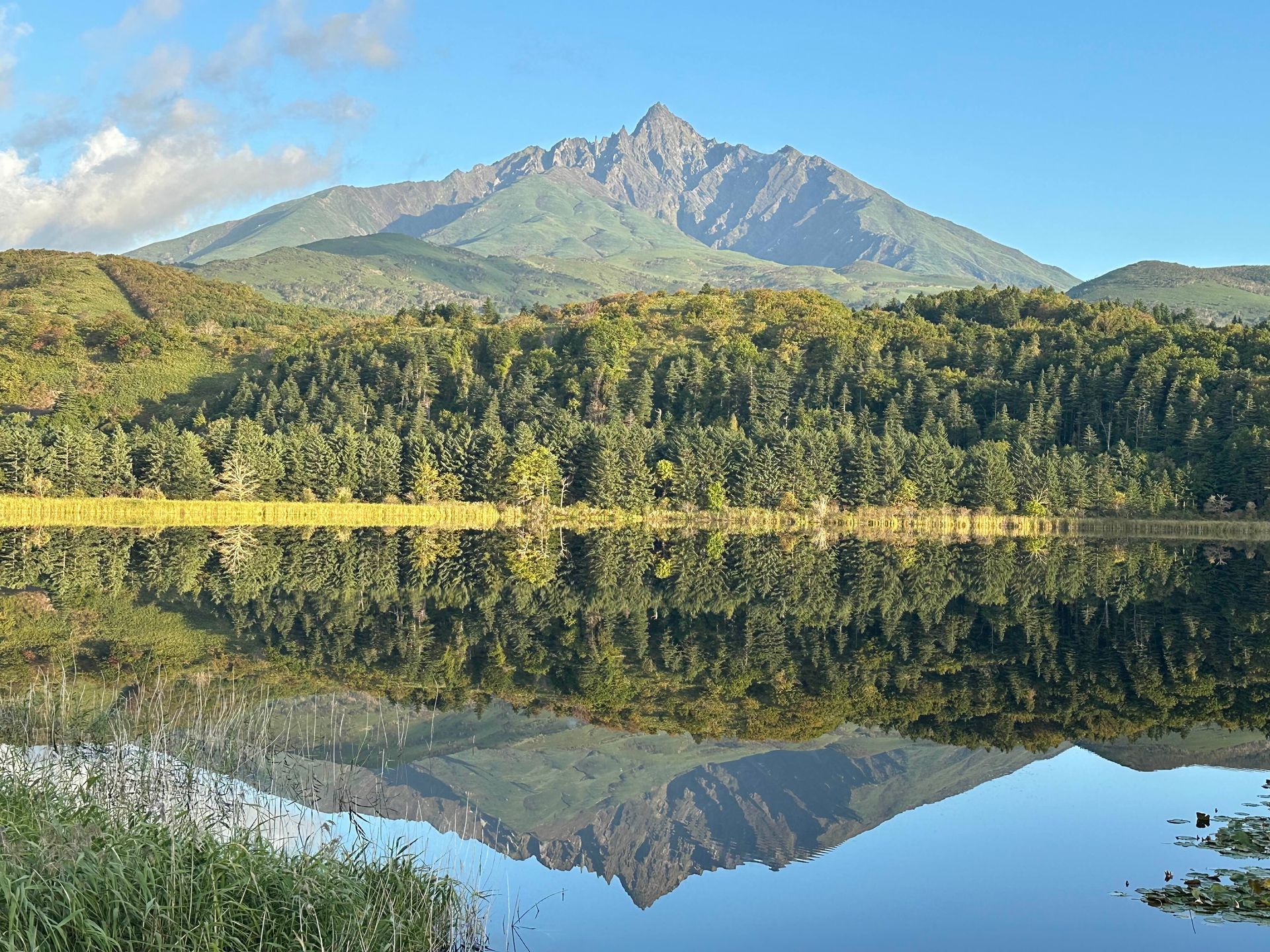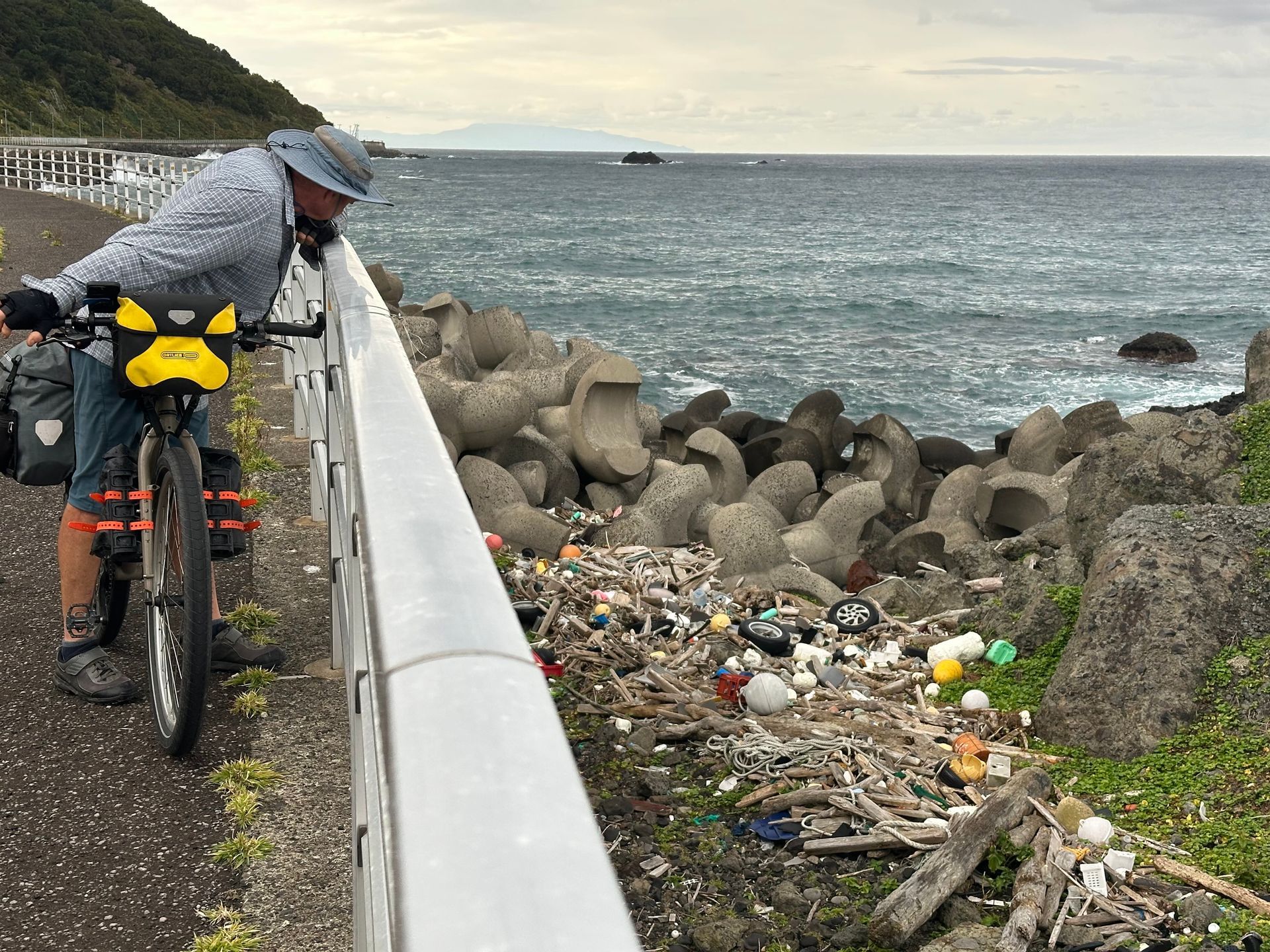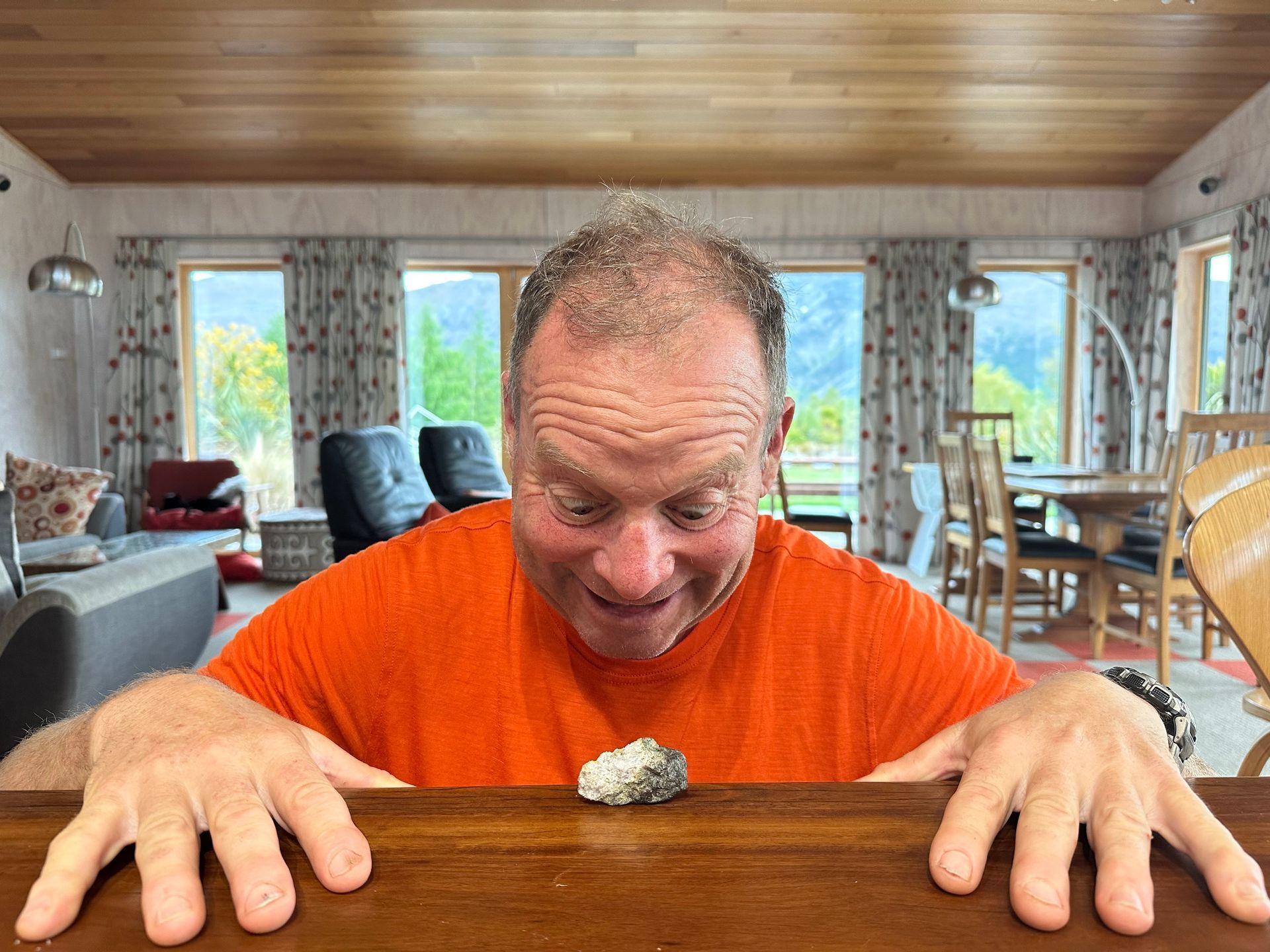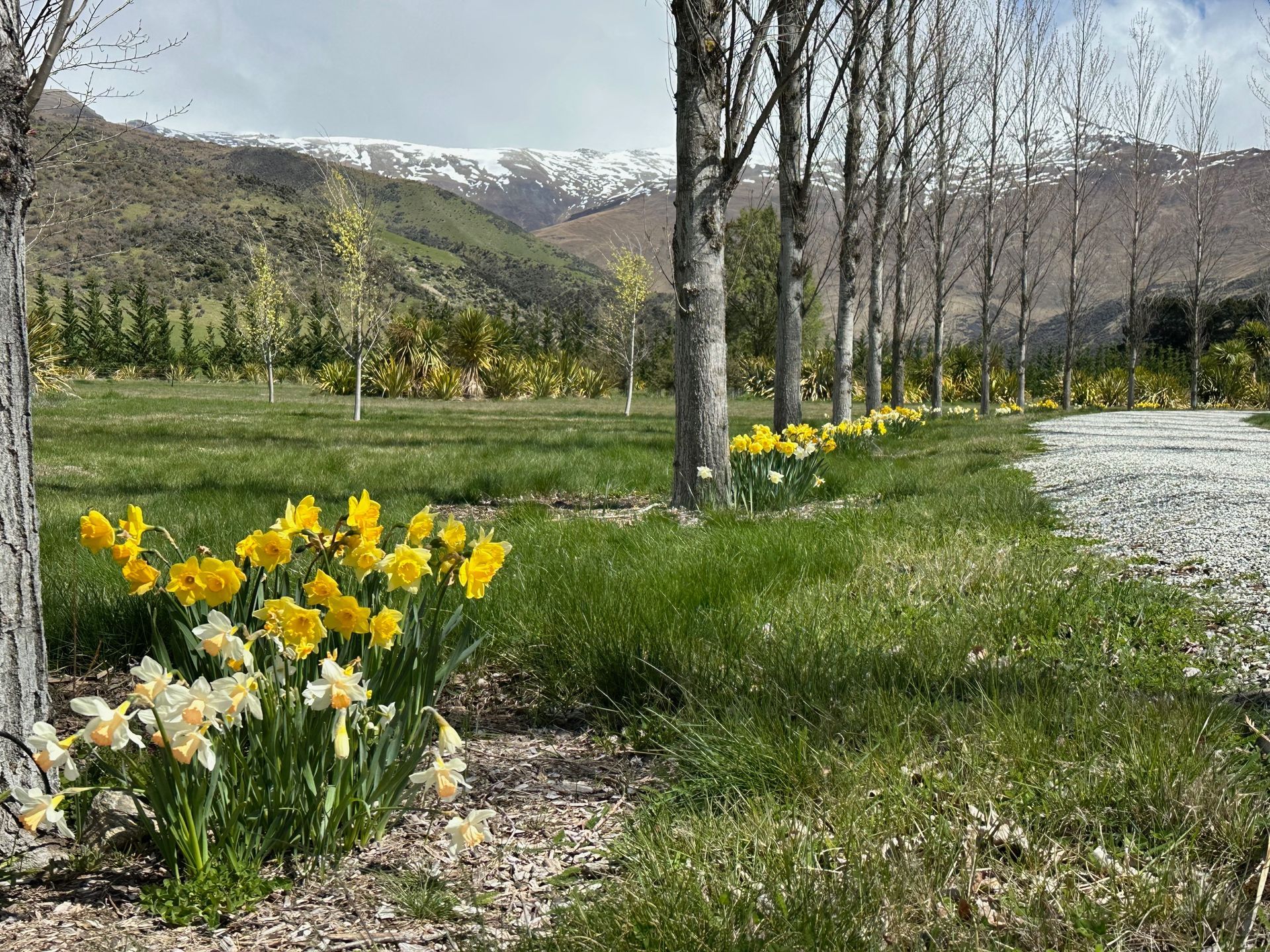The Japanese Rubbish Mystery
Mt Rishiri on Rishiri Island, NW of Hokkaido - no rubbish in sight

What do Japanese people do with their rubbish? It’s been hard to discover…
According to Stuff, 22% of visitors to Japan say the worst thing about their trip was finding where to throw rubbish. It can’t be too bad a trip if that’s the worst thing that happens to you, however discarding rubbish an unusual issue to have top of mind. Where to throw rubbish also turns out to be a top topic in the Japan cycle touring WhatsApp group I joined.
Why is rubbish such a big deal? Because there are very few rubbish bins! And when you stay at campgrounds in Japan, they ask you to take your rubbish with you. But take it to where? Taking rubbish is fine if you have a car and are going to your home, where you have a place to dispose of rubbish. But it’s not so fine as a cycle tourist with limited space in which to store rubbish.
The Japanese ethos is neat and tidy and Japan has a focus on reducing waste. This started with their Waste Management Law in 1991 and Basic Recycling Act in 2000, both of which laid out frameworks for waste minimisation and set numerical targets against which to measure progress. The goal in Japan is for people to take responsibility for their own waste, by taking it home. That works, to a certain extent, but rubbish collections mean people don’t really take responsibility for their own waste. They just don’t leave it in the public space – the ethos is more about tidy than about reducing waste.
So why don’t we minimise our waste while cycling to reduce the problem of where to put our rubbish? We’d love to create less waste but Japanese food comes with incredible amounts of packaging. It is nigh impossible to buy any food that isn’t plastic wrapped – every piece or selection of fruit and vegetables is wrapped as is every piece of bread. Some things are multiply wrapped e.g. to access your camembert cheese requires opening the cardboard box, then taking the soft plastic top off the plastic cup in which the cheese sits, then removing the foil wrapping from directly around the cheese. Not to mention that every store also wants to put your goods in a plastic bag. If you get distracted swiping your card, you will find your purchases in one or more throw away plastic bags along with tissues (contained within other plastic bags), and chopsticks, also encased in plastic bags.
The packaging of everything feels like a contradiction in terms when compared with the lack of rubbish bins. Why have everything packaged but make it hard for people to throw rubbish away? And why the lack of rubbish bins?
The lack of public rubbish bins was apparently triggered by the 1995 Tokyo Subway sarin gas attack. Sarin was spread from plastic bags dropped in train cars and pierced with the ends of the umbrellas as the Aum Shinriyo cult members got off i.e. the sarin was not spread from rubbish bins. However, rubbish bins were seen as places people could hide packages in future attacks, so were removed. Or that’s what the internet says…why rubbish bins would be removed from rural Hokkaido because of an attack in a Tokyo subway seems quite a stretch. In addition, lack of public rubbish bins fits the ’neat and tidy’ ethos.
At home, people leave waste in little wire-covered hutches by their gates, neatly sorted into combustibles, non-combustibles, plastic bottles, glass bottles, cans and paper. Composting appears to be non-existent. The waste components are picked up on different days by little trucks which smell really bad and play nice tinkly music while they drive, sounding like New Zealand ice cream trucks. Some of them are Fonterra pink.
Cycle tourists, who have no home to go to, can only leave waste is in convenience stores. However, there are large signs saying not to deposit household waste in the bins, only waste generated from purchases at the store. But there’s nowhere to sit and eat your food in the store, or outside. You can sit on the tarmac in the car park but that’s not what Japanese do (grungy cycle tourists have been known to resort to such measures). However, we buy food for dinner and breakfast, as well as lunch, and we aren’t going to eat dinner and breakfast outside convenience stores.
The net result is us walking nonchalantly into convenience stores with a bag of accumulated rubbish and rapidly shoving it into the bins, hoping we won’t get questioned. However, Japan does not appear to be a telly-offy sort of place. People mind their own business and do not look at the waste you are putting in a convenience store bin.
But does the lack of rubbish bins make a positive impact in terms of municipal waste? Apparently it does. Or at least the strategy of which it is part does. Japan is a success in terms of minimising municipal waste according to the 2025 Global Waste Index (measuring waste in the 38 OECD countries):
- Japan comes out the best in the developed world, creating only 326kg of waste per person per year; 3kg of waste goes to landfill, 65kg is recycled and 245kg is incinerated.
- New Zealanders generate 608kg of waste per person per year; 304kg goes to landfill, 213kg is recycled and none yet incinerated.
- The USA is the worst, at 951kg per person per year; 447kg goes to landfill, 284kg is recycled, 127kg is incinerated.
- Other countries producing more waste per person than New Zealand are Canada, Denmark, Ireland, Israel, Luxembourg, Switzerland, Norway and Austria. The remainder of the 38 produce less.

The main place we have seen lots of rubbish in Hokkaido are the west coast beaches with debris from fishing boats everywhere – nets, floats, buoys, ropes, crates. It has been a strange contrast – tidy towns but no-one tidying the beach. Or maybe people do pick the rubbish up but it keeps accumulating. It doesn’t look like there’s much control of fishing industry waste and I doubt it’s counted in the national statistics. I have looked online for statistics on industrial waste and not got very far – it doesn’t seem like a statistic people are keeping track of.
In the end, I can’t and shouldn’t make any conclusive statements about anything based on a few weeks in a country, including rubbish. The point of travelling is to observe differences, not decide whether they are good, bad or indifferent. Except, please Japan, could you overcome your love of white bread and sell us something brown with grains in it?
Japanese bread - any sort you like, as long as it is white










